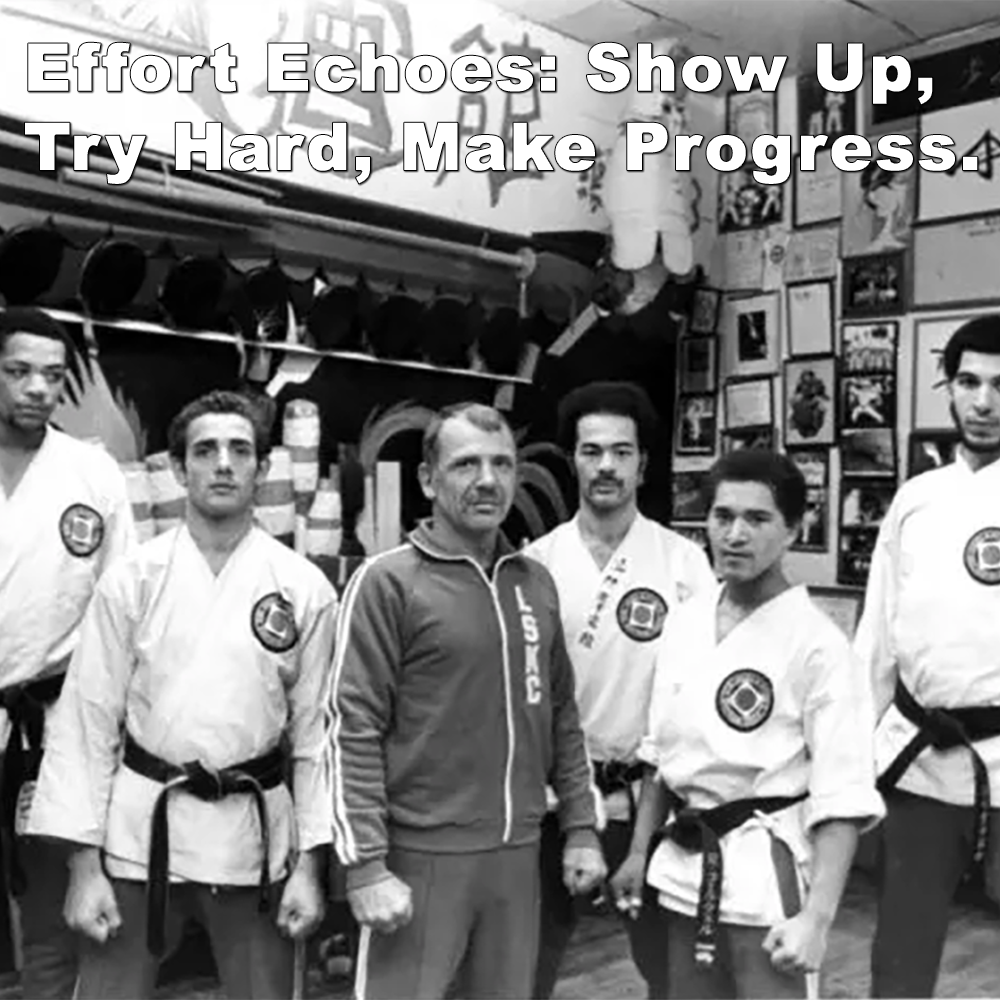
(Approx 2 minute 10 second read)
While some might think it takes grand gestures to impress a teacher, the reality is much simpler.
.
The key lies in a student’s willingness to put in a little effort.
.
For decades now I’ve been an instructor in the martial arts. Over the years, I’ve seen students who learn something in class, only to return the next week with a sheepish “no” when I ask if they practiced. Work got too busy, they say, or they simply didn’t have the time.
.
As a teacher, this response can be disheartening. I pour my time, physical energy, and emotional investment into creating a space for learning. When a student doesn’t reciprocate that effort by carving out some personal practice time, it can feel like a reflection on their commitment, and ultimately, to my time.
.
A few years ago, I embarked on a writing journey, initially focusing on articles for my students. However, I was pleasantly surprised to discover broader interest in my work, which has led me to explore a wider range of subjects. While I’m delighted by the external engagement, I would still like to see more interaction from my students.
.
Conversely, some students radiate genuine enthusiasm. They arrive eager to showcase their progress, seeking corrections and guidance to move forward. They ask insightful questions about specific movements or techniques they have been struggling with.
.
In class, when presented with new material, they delve right in, practicing diligently until the next instruction. These students don’t waste time standing around idly; they’re constantly engaged in the learning process.
.
It’s these students who make a teacher truly come alive. Their dedication fuels my passion for teaching, reminding me of the immense satisfaction that comes from witnessing growth and perseverance.
.
Cast your mind back to your first martial arts lesson. I can tell you, in 1974 when I enrolled in my first karate class, I didn’t waste a moment when I got home. I spent at least an hour each day diligently practicing the punches, blocks, and kicks we’d covered.
.
My room, and the back yard, became my training ground, filled with the sounds of punches and the rhythmic steps of kicks practiced down to the end of the yard and back.
.
It was a personal mission to show my teachers I was dedicated to mastering the material. I felt a deep responsibility to try to excel in my own training.
.
So, what defines a good student in the martial arts? It’s not necessarily about possessing the most exceptional skills. It’s about showing up, putting in the effort, and actively engaging with the material outside of class.
.
It’s about going beyond simply practicing; it’s about dissecting the movements, understanding the underlying principles, and truly internalizing the techniques.
.
The dedication you invest outside of the dojo is equally important as the time spent within it. Ultimately, being a good student boils down to respecting your teacher’s time and effort by putting in some of your own.
.
Your commitment fuels your own progress, and in turn, inspires your teacher to keep pushing you to new heights in your training.
.
.
Photo Credit: Ronnie Colwell 10th dan teaching in the 1980s. Pic © National Museums Liverpool
